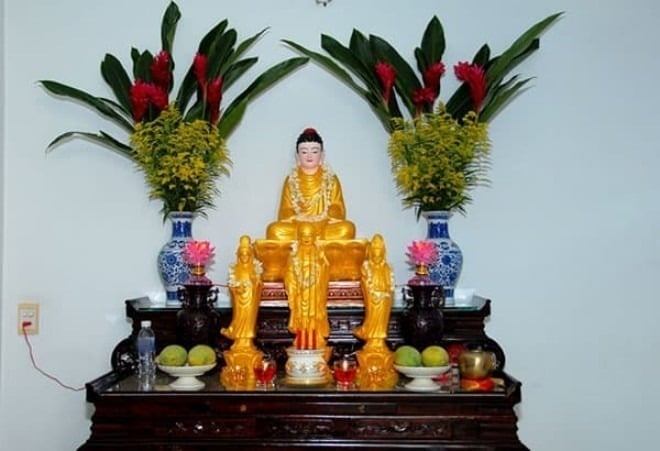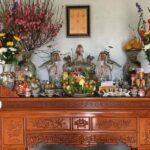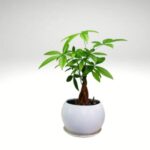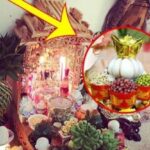Flowers play a significant role in Vietnamese culture, especially during special occasions such as the 1st and 15th days of the lunar month, festivals, and ancestral worship. A well-arranged floral display is believed to bring prosperity and good fortune while showing respect to the ancestors and deities.
Fresh flowers are seen as a symbol of new life and the essence of nature, bringing a sense of freshness and solemnity to the worship space.
The placement of a flower vase on the altar is thought to enhance the family’s fortune and attract the blessings of ancestors and Buddha. However, not everyone knows the proper way to arrange flowers on an altar.
Why do wealthy families usually place a flower vase on the left side of the altar when offering incense?
Wealthy families tend to pay close attention to worship rituals and often believe that arranging the altar according to feng shui principles demonstrates respect to their ancestors while inviting prosperity and good fortune.

Wealthy families often place a high importance on worship rituals and ceremonies.
When placing a single flower vase, it is typically positioned on the left side of the altar, following the principle of “east for vases and west for fruit plates.” This arrangement aligns with the natural order, as the sun rises in the east and sets in the west, and flowers bloom before fruits appear.
For altars facing the main entrance, which is typically oriented towards the south, placing the flower vase on the left side (east) allows the fragrance of the flowers to permeate the room when the east or southeast wind blows, adding a sense of tranquility and solemnity to the worship space.
When using two flower vases, they should be placed symmetrically on both sides, with the fruit plate in the center, in front of the incense burner. This arrangement not only creates a warm and inviting atmosphere but also preserves the symbolic meaning of the flowers.

Symmetrical placement of flower vases on the altar.
In addition to the flower vases, the host should also pay attention to other worship items such as the three or five ceremonial objects, offering trays, and incense holders to enhance the solemnity of the worship space. For smaller altars, such as those hung on walls, a single flower vase and an incense holder placed opposite each other may be sufficient.
It is important to avoid overcrowding the altar with too many flower vases, as this may disrupt the balance with other worship items rather than enhancing the energy of the space.
When choosing a flower vase, opt for materials such as ceramic, porcelain, or glass, and avoid using metal vases. The flowers should have a gentle fragrance, be free of thorns, and be neatly trimmed to ensure both spiritual value and safety.
The Four Lucky Bamboo Placement Spots to Activate Wealth and Prosperity
There are numerous auspicious placements for the Trúc Phú Quý plant within your home to attract wealth and prosperity. However, there is one location that should be avoided at all costs, as it can lead to financial losses and misfortune.
Sure, I can assist you with that.
# Why You Should Place Garlic on Your Ancestral Altar During the ‘Ghost Month’ – And It’s Not Superstition
“Unleash the Power of Garlic: A Spiritual Guide for the Seventh Lunar Month.
The ancient art of Feng Shui has long been a guiding light for many families seeking harmony and prosperity. This month, our focus turns to an unlikely hero: garlic. Yes, this pungent bulb holds a powerful secret, according to top Feng Shui masters. Placing garlic on your ancestral altar during this ‘Hungry Ghost Festival’ month is said to offer profound protection and blessings. But why? Unraveling this mystery promises an enlightening journey into the heart of Asian spiritual traditions.”



































